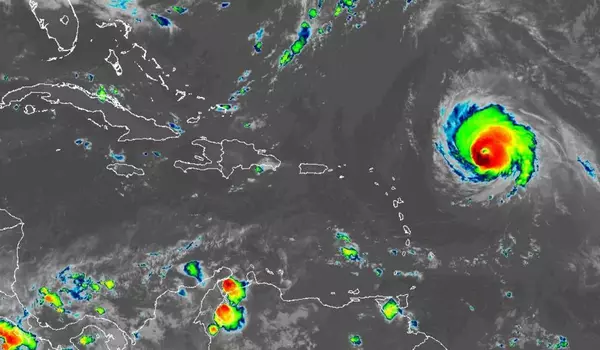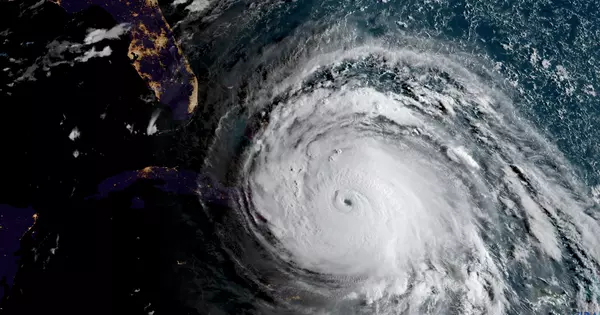Winds gusting over 300 kilometers per hour batter a two-story wooden house, ripping its roof from its walls. Then comes the water. A 6-meter-tall wave engulfs the structure, knocking it off its foundation and washing it away.
That’s the terrifying vision of researchers planning a new cutting-edge facility to recreate the devastation wreaked by the world’s most powerful hurricanes. The National Science Foundation awarded a $12.8 million grant to researchers in January to design a facility capable of simulating wind speeds of at least 290 km/h while also producing deadly, towering storm surges.
Human-caused climate change is exacerbating hurricanes: They’re growing in size, wetness, strength, and speed. Scientists predict that the 2022 Atlantic hurricane season, which runs from June 1 to November 30, will be the seventh consecutive season with more storms than usual. Recent seasons have seen an increase in rapidly intensifying hurricanes, which has been linked to warming ocean waters.
Researchers predict that these trends will continue as the Earth warms further. And coastal communities all over the world need to know how to prepare: how to construct structures — buildings, bridges, roads, water, and energy systems — that can withstand such punishing winds and waves.
To help with those preparations, FIU researchers are leading a team of wind and structural engineers, coastal and ocean engineers, computational modelers and resilience experts from around the United States to work out how best to simulate these behemoths. Combining extreme wind and water surges into one facility is uncharted territory, says Ioannis Zisis, a wind engineer at FIU. “There is a need to push the envelope,” Zisis says. But as for how exactly to do it, “the answer is simple: We don’t know. That’s what we want to find out.”
The Wall of Wind is intended for wind testing of entire structures at full scale. Another wind machine at the University of Florida in Gainesville can zoom in on the turbulent behavior of winds right at the atmosphere-ground boundary. Then there are the massive water wave tanks at Oregon State University in Corvallis that simulate tsunamis and storm surges.
Prepping for “Category 6”
It’s not that such extreme storms haven’t been seen on Earth. Just in the last few years, Hurricanes Dorian (2019) and Irma (2017) in the Atlantic Ocean and super Typhoon Haiyan (2013) in the Pacific Ocean have brought storms with wind speeds well over 290 km/h. Such ultraintense storms are sometimes referred to as “category 6” hurricanes, though that’s not an official designation.
The National Oceanic and Atmospheric Administration, or NOAA, ranks hurricanes in the Atlantic and eastern Pacific oceans on a scale of 1 to 5, based on their wind speeds and the amount of damage they can cause. Each category has a speed increment of about 30 km/h.
Category 1 hurricanes cause “some damage,” bringing down power lines, toppling trees, and possibly knocking roof shingles or vinyl siding off a house. Category 5 storms, with winds of up to 252 km/h, cause “catastrophic damage,” destroying buildings and potentially rendering neighborhoods uninhabitable for weeks or months.
But 5 is as high as it gets on the official scale; after all, what could be more devastating than catastrophic damage? That means that even monster storms like 2019’s Hurricane Dorian, which flattened the Bahamas with wind speeds of up to nearly 300 km/h, are still considered category 5.

Superstorm simulation
FIU already hosts the Wall of Wind, a huge hurricane simulator housed in a large hangar anchored at one end by an arc of 12 massive yellow fans. Even at low wind speeds — say, around 50 km/h — the fans generate a loud, unsettling hum. At full blast, those fans can generate wind speeds of up to 252 km/h — equivalent to a low-grade category 5 hurricane.
Inside, researchers populate the hangar with structures mimicking skyscrapers, houses and trees, or shapes representing the bumps and dips of the ground surface. Engineers from around the world visit the facility to test out the wind resistance of their own creations, watching as the winds pummel at their structural designs.
It is one of eight facilities in the US Natural Hazards Engineering Research Infrastructure, or NHERI, a national network of laboratories that study the potential impacts of wind, water, and earthquake hazards.
The Wall of Wind is intended for wind testing of entire structures at full scale. Another wind machine at the University of Florida in Gainesville can zoom in on the turbulent behavior of winds right at the atmosphere-ground boundary. Then there are the massive water wave tanks at Oregon State University in Corvallis that simulate tsunamis and storm surges.
The new facility aims to build on the shoulders of these giants, as well as on other experimental labs around the country. The design phase is projected to take four years, as the team ponders how to ramp up wind speeds — possibly with more, or more powerful fans than the Wall of Wind’s — and how to combine those gale-force winds and massive water tanks in one experimental space.
Existing labs that study wind and waves together, albeit on a much smaller scale, can offer some insight into that aspect of the design, says Forrest Masters, a wind engineer at the University of Florida and the head of that institution’s NHERI facility.
As part of the design phase, a scaled-down version of the future lab will be built as a proof of concept. A new round of funding and several years will be required to complete the full-scale facility.
Historically, researchers have used one of three approaches to study the effects of strong wind storms: making field observations of the aftermath of a given storm, building experimental facilities to re-create storms, and using computational simulations to visualize how those impacts might play out over large geographical regions. According to Tracy Kijewski-Correa, a disaster risk engineer at the University of Notre Dame in Indiana, each of these approaches has advantages and disadvantages.














